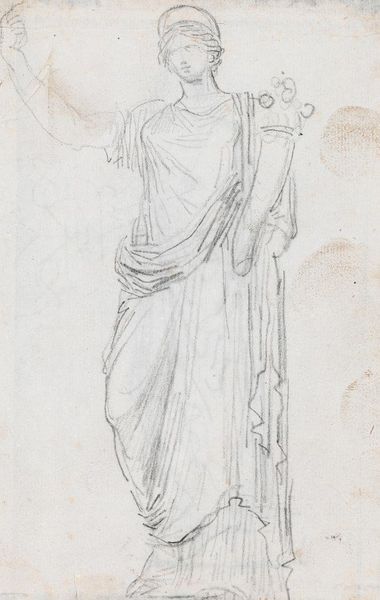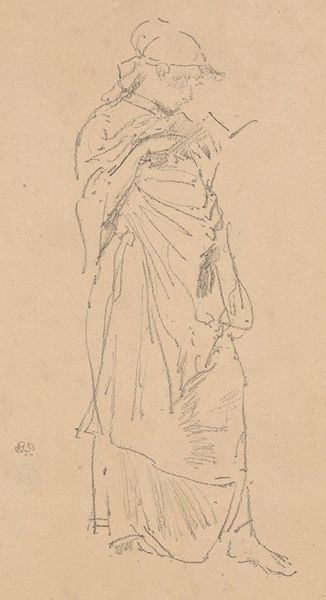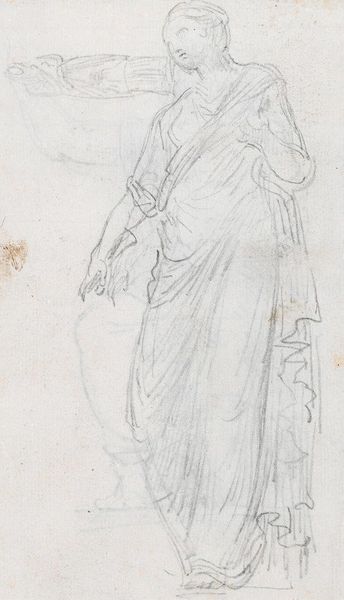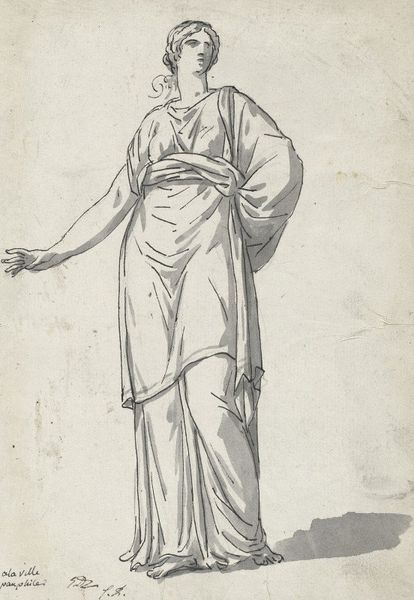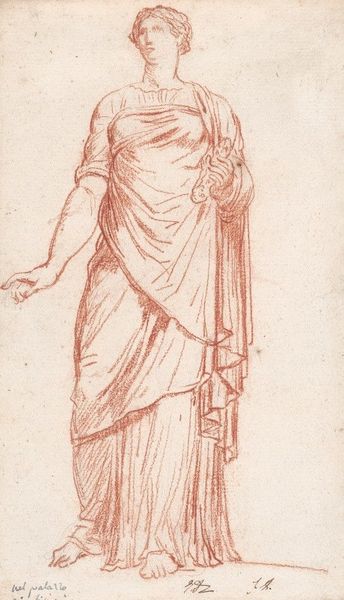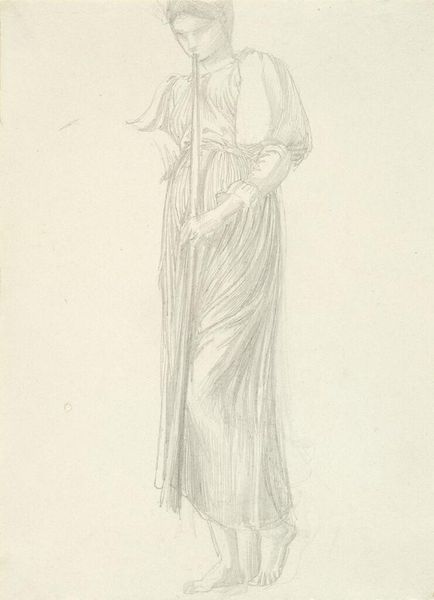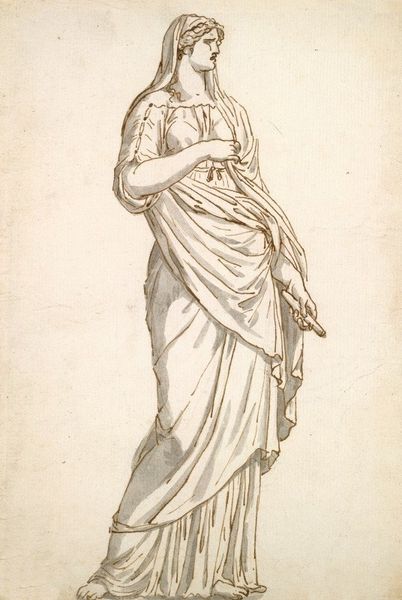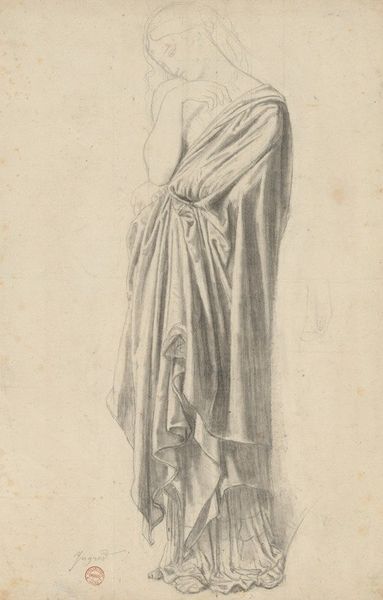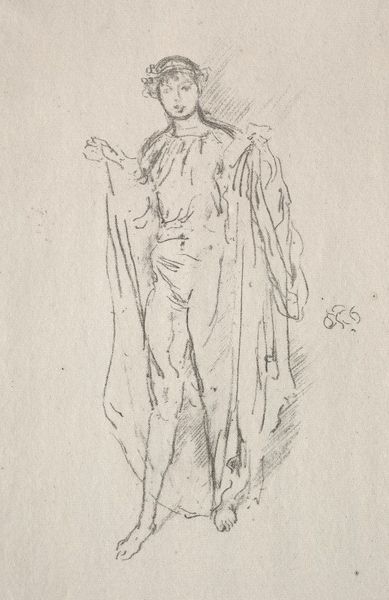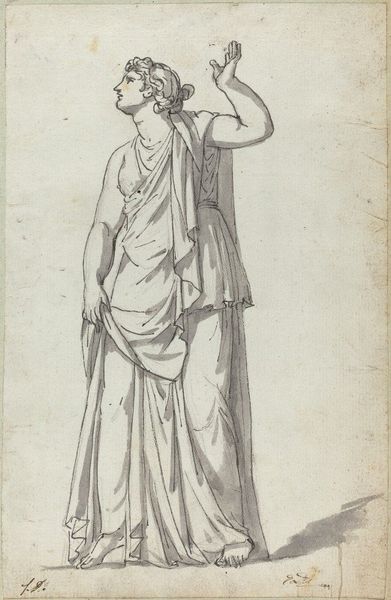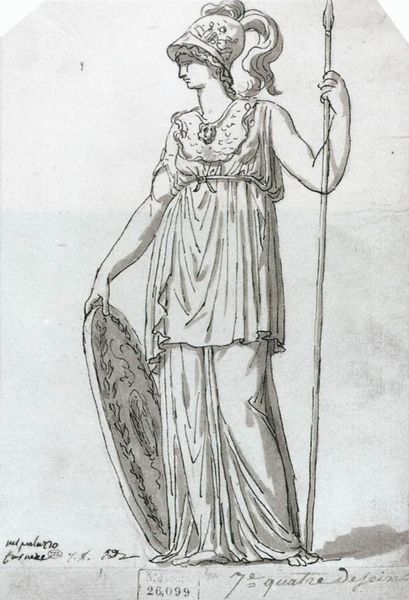
drawing, pencil
#
portrait
#
drawing
#
pencil sketch
#
figuration
#
classicism
#
ancient-mediterranean
#
pencil
#
history-painting
Copyright: Public Domain: Artvee
Editor: Here we have Hubert Robert’s "Statue of Zeus Holding a Thunderbolt," a pencil drawing from around 1760. The rendering feels both classical and a bit ghostly. What stands out to you? Curator: Immediately, the focus is drawn to the linear structure. Robert’s economy of line is striking, creating a figure monumental in implication yet rendered with a seeming lightness. Consider the interplay between the draping fabric and the revealed musculature; the contrasts generate a dynamic tension. Editor: It's interesting that you focus on the lines and structure. Did Robert make preliminary sketches before moving onto more detailed artwork? Curator: Quite possibly. Think of this work as an exercise in form. The absence of color amplifies our attention to tonal variations achieved purely through the pressure and density of the pencil. Notice the almost diagrammatic quality in certain areas. How does this impact your understanding? Editor: It's like he's dissecting the statue, focusing on its fundamental shapes rather than a perfect likeness. What would you say is most evocative formal element within the composition? Curator: It must be the unresolved hand, suspended in air, still clasping the implied thunderbolt. The very incompletion provokes an engagement; we, the viewers, are invited to complete the image in our minds, adding to Zeus' power and presence. Editor: That's a fascinating way to put it. I had been looking at the draping, but I see how the open-endedness contributes something unique to the piece. Curator: Precisely! It demonstrates the latent potential inherent in the formal elements themselves, regardless of representational accuracy. A lesson for us both.
Comments
No comments
Be the first to comment and join the conversation on the ultimate creative platform.
